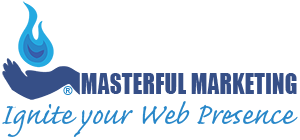
Only a couple of months ago LinkedIn reached one important milestone – it reached one billion members in over 200 countries and territories worldwide.
It is not only good for your business to be present and versed when dealing with this network – it has become essential for some time!
While many small business owners understand the basics of LinkedIn, most are unaware of all the amazing, practical, and useful tools LinkedIn can offer. One of such tools is LinkedIn Groups.
These groups are envisaged as active hubs where business owners, for example, may
- exchange ideas,
- seek guidance,
- form crucial contacts.
Today, we’ll look at six practical methods for using LinkedIn Groups to help your small business thrive, along with a couple of exciting real-world examples.
1. Locate your niche groups
Let’s say you’re a boutique coffee roaster aiming to expand your wholesale distribution. Instead of aimlessly scrolling through LinkedIn, you should strategically join groups like “U.S. Coffee Championships“, “Specialty Coffee Professionals“, or “Coffee Professionals Worldwide”.
The next step would be to immerse yourself in these niche communities. Spend some time and effort engaging with café owners, distributors, and fellow roasters. This small effort could do wonders for your business.
Potential collaborations could be on the table. And you’ll be able to learn some free market tips along the way.
2. Observe and listen
Let’s think about the following example: you are a software developer seeking insights into the latest trends. Your immediate work environment, your friends and colleagues with their social media feeds are the usual go-to when dealing with the latest in your line of business.
There is another way. Try joining groups with more than a million users looking to share or learn the same ideas.
As you join groups like “Technology Investor Club: Artificial Intelligence, Data Science, Fintech, IoT, Robotics & Cloud AI” or “Software/Technology: AI, Marketing, Social Media, Startups, Blockchain, Human Resources & Metaverse” you will immediately observe vibrant discussions on emerging technologies.
If you have a particular point of interest – let’s say personal CRM software solutions, just by actively listening to conversations, you will achieve the following:
- gain valuable market intelligence,
- learn about the latest trends in CRM technology,
- tailor your software solutions to meet industry demands.
3. Provide value
Consider the following example: you are a freelance graphic designer looking to disseminate some of your works and expertise, but without coming across as overly promotional.
One idea could be to locate LinkedIn groups such as “Graphic Design Freelancers”, or “Designers Talk: Graphic, web, digital design and creative professionals group” and join them.
By sharing insightful design tips or critiques within groups such as these, you put yourself in a position to be acknowledged as a valuable member.
Over time, group members will recognize your expertise, leading to inquiries for design projects and referrals from within the community.
4. Start the conversation
Certain professions can find their way around LinkedIn more easily than others. One such profession is a marketing consultant.
You may have some topic starters, or in the lack of the same, you may want to delve into fellow workers’ ideas, either way being a member of a topical LinkedIn group can only advance those pursuits.
Within groups such as “Digital Marketing: Social Media, Search, Mobile & more” or “Media & Marketing Professionals Worldwide” you can try to engage people in conversation with questions like: “What’s your top content marketing challenge?”, “Which segments of our work are threatened by emerging AI models?”, or “What are the traits of the marketing persona in your particular line of work?”.
These thought-provoking queries ignite lively discussions, attracting attention to your expertise and fostering connections with potential clients seeking marketing guidance.
You can effectively achieve the same by finding some local groups with fewer members, some of which can be in your immediate work environment.
5. Establish business friendship
This time you are a small boutique clothing retailer and your goal is to connect with fashion influencers and potential collaborators. One way to do this is to engulf yourself with the depth of other media-focused social networks such as TikTok or Instagram.
But if you want to avoid that nuisance, there is a way around, and it’s called – you guessed it – LinkedIn Groups.
Within groups like “Fashion Influencers / Content Creators / Bloggers” or “Fashion & Lifestyle Industry Professionals Worldwide,” you are in a position to engage in genuine conversations with influencers and fellow retailers.
By sharing insights on industry trends or offering support and advice, you forge authentic connections that may evolve into partnerships or cross-promotional opportunities.
6. Maintain consistency
You are now an owner of a cosmetics shop and you want to look for a budding entrepreneur. Your idea is to launch a sustainable skincare line seeking to build brand awareness.
By consistently participating in groups like “Certified Organic Skincare” or “Wholesale Cosmetics, Makeup & Skincare Forum” you will be able to:
- seek feedback on product formulations,
- offer insights on sustainable practices
- look for practical advice on the matter.
Through regular engagement, you will cultivate a loyal following within the community, driving traffic to your brand and fostering customer loyalty. This is particularly applicable to local group communities within your line of business.
Over to you
In essence, LinkedIn Groups are dynamic ecosystems in which small business owners may prosper through smart networking, knowledge exchange, and connection building.
By following these practical techniques and group suggestions, and integrating them with real-world examples, small business owners can realize the full potential of LinkedIn Groups.
About the author

Brenda Jones
Brenda is a passionate business blogger, tech nerd and gamer. She is interested in topics that cover business communication, sales, online branding, digital marketing and social media, business tools and extensions, as well as organization and management of LinkedIn connections.




